
Changing Faces India FAQs

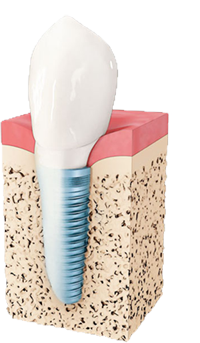
A dental implant serves as the tooth root of your new tooth. It is only a few millimeters long and carefully engineered, so your dentist can firmly anchor it in your jaw bone like your natural tooth and keep the replacement tooth stable. On top of the implant a crown or bridge will be used as the visible part of your new tooth. It is made of strong material (like e.g ceramics) and individually designed by a dental laboratory to make it look and feel like your natural tooth.
Dental implants are widely considered to be the most successful method of tooth replacement used today, because they give a number of benefits to patients.
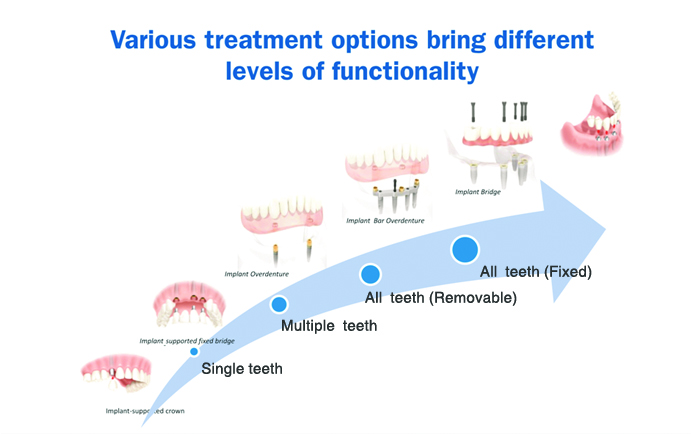
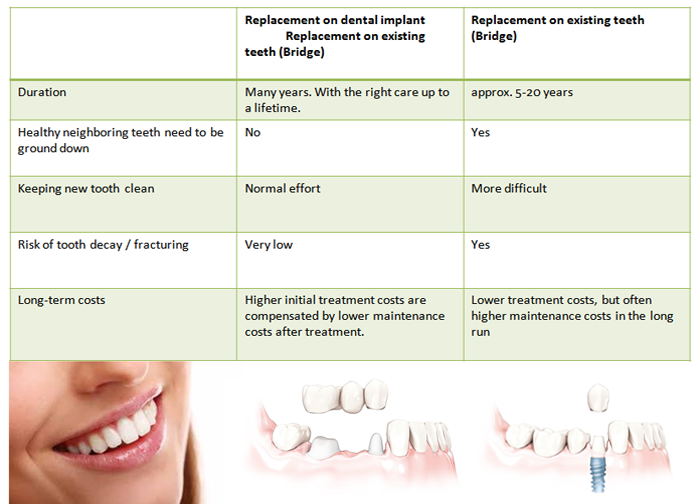
A single lost or damaged tooth can influence your daily life. Even though it may be at the back of your mouth and not visible from the outside , over time it can start affecting your appearance, self-esteem, your oral health and even your health in general. Learn more about what role each to oth has to play in your mouth, the consequences of tooth loss and when to contact a dentist.

Unsure whether to see a doctor about your damaged or lost tooth? Here is a list of reasons to make an appointment.
A dental restoration at the right time can prevent further oral health complications that could affect remaining healthy teeth.
Getting your tooth replaced restores your full chewing function, so you can go back to enjoying the foods you love.
Missing teeth can often affect the positioning of your other healthy teeth, causing a misfit of the upper and lower jaws and stiffness in the muscle and joints.
A lack of teeth can severely reduce density of jaw bone, because it is no longer stimulated when chewing. This leads to a shrinking jaw line which makes you look older than you really are.
If you can say yes to one or more of these reasons, speak to your dentist about modern dental restorations that will let you smile again.
All of your teeth have an important role to play. They help you chew and grind up food. They also help you speak clearly and are the essence of your smile.
We start off with 20 milk teeth when we are children, which then get replaced by 32 permanent teeth.

Plaque is a biofilm that forms on your teeth if it's not washed away by saliva or regularly brushed away with a toothbrush. Bacteria transforms sugar and starch into acids. These acids have a negative effect on the tooth enamel by dissolving the minerals that harden it. With time, this can destroy your teeth by creating holes. If not treated properly, your tooth can die.

Your gums are made up of tissue and ligaments that keep your teeth stable. They work as protective shields for your tooth roots and stimulate your jaw bone to grow around the tooth. When bacteria cause an inflammation of the gums, these ligaments start vanishing. The gu m pulls back and the bone around the tooth reduces.
These gum diseases, also called periodontal diseases, loosen your teeth and expose the sensitive tooth roots. Now it’s an easy job for bacteria to form on your teeth and cause tooth-root decay and tooth loss.

Accidents, for example in sports, can lead to the loss of one or more teeth and cause trauma to your gums and jaw bone. Often trauma only becomes apparent months or years after the accident, when it has already impacted the tooth root.
Some people are born with a reduced number of teeth or no teeth at all (an illness called congenital anodontia), others never develop their permanent adult teeth. Sometimes the surface of your tooth (enamel) isn't strong enough, which can create cone or peg-shaped teeth (ectodermal dysplasia).
Find out how dental implants can replace a missing or severely damaged tooth and bring back full function as well as a natural look and feel.

When you lose teeth, it disturbs the interplay between teeth and bone. Gum and bone are no longer stimulated well enough due to the missing teeth, so the jaw bone starts shrinking and your gum pulls back. This can weaken neighboring teeth until they collapse. Teeth in the opposite jaw can then start growing into the gap.

Missing teeth and a reduced jaw bone can make your face look older and wrinkly, and for your cheeks to become hollow and saggy, because they can no longer fully stabilize your lips and cheeks from the inside.
Every tooth counts.


Dental implants are a popular and permanent way to improve the stability of your mouth. If you have missing teeth, or wear removable dentures, they can offer a way for you to maintain a stable, strong and long-lasting smile.

Technically, a dental implant is a small but very strong post made from biocompatible metals or ceramics. Under local anesthetic, it is inserted into the jaw bone in place of the missing tooth root and acts as a support for the tooth. Dental implant therapy is today's long-term, state of the art restoration technique that can cover all indications. It has been scientifically tested and used in the last three decades by qualified dentists and surgeons worldwide.
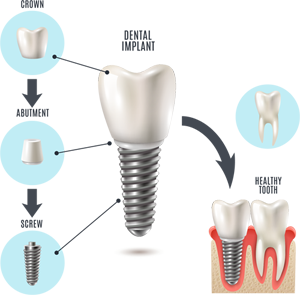
Dental crowns and bridges are also known as replacement teeth. They can be made of different material and are used to replace any tooth that is missing or beyond repair. Beforehand, a dental laboratory designs each replacement tooth individually so that it matches your bite and the look and feel of your other teeth.
A crown is used on a damaged tooth or a dental implant.
To restore missing teeth, your dentist can use a bridge. It consists of several replacement teeth that will literally bridge the gap. But using bridges on natural teeth can have several serious disadvantages:
Certain types of bridges, made of metal and covered with porcelain, can lead to visible black metal lines at the rim of the bridge when your gums keep receding. An all-ceramic bridge can provide an alternative in such cases. Speak to your dentist if an all-ceramic bridge might be a good solution for you.
Bridges are anchored to adjacent teeth to keep them in place. This means, however, that these healthy neighboring teeth must first be reduce d in size.
When you lose teeth, it disturbs the interplay between teeth and bone. Gum and bone are no longer stimulated well enough due to missing teeth, so your jaw bone starts shrinking and your gum pulls back.
To avoid grinding down teeth and effects on jaw bone and gum, your dentist can replace the tooth root to create a completely new tooth with a dental implant.
Speak to your dentist to find the solution that’s best for you.
Dental implants are widely considered to be the most successful method of tooth replacement used today, because they give a number of benefits to patients.
A dental implant looks and feels just like your natural tooth. The color, shape and contour of the new tooth can be made to match. The result is a natural smile, that can bring back your confidence and quality of life. With your new teeth sparkling on the outside, you will soon feel a smile coming back on the inside.
Did you have to give up on some of your favorite dishes since you lost your teeth? Or do you feel self-conscious when talking to your colleagues and friends, because missing teeth or dentures make it more difficult to speak clearly?
Dental implants bring back the full function of natural teeth. So no matter how hard, crunchy or sticky the food, dental implants can put it back on your menu. And they can restore your clear speech for the next business presentation or long chats with your friends.
Other restoration methods often require neighboring teeth to be ground down to anchor the restoration in your mouth. Dental implants do not harm neighboring teeth.
Since dental implants are fixed to your jaw bone, they are usually more stable, more comfortable and long-lasting than other restorations. On top of that, dental implants are made of biocompatible materials, which means that your body tolerates them.
Dental implants are very durable. With proper care and good oral hygiene, implants will last for many years or even a lifetime. Decades of research have gone into their functionality and stability, since the first patient received modern dental implants in 1965.
Implant treatment can be considered a long-term investment into your health and your wellbeing - in short, an investment into your life. Compared to other restorations, costs can seem higher at first glance. However, higher maintenance costs, the potential increase in lost jaw bone, and, ultimately, the loss of even more teeth can make other restorations more expensive in the long run.1,2
Your dentist will first examine your dental situation carefully to decide if you meet the prerequisites for dental implant treatment. It is essential that your gums and jaw bone are free from inflammation. If necessary, these conditions are treated prior to surgery.
During diagnosis, the dentist also evaluates what type of jaw bone you have and how much of it is left. After years of living with missing teeth, your jaw bone can sometimes be severely reduced. In this case, your dentist will discuss alternative procedures with you to make dental implant treatment possible.
Your dentist may opt to use digital tools to plan your treatment by generating an exact 3D image of your mouth. This will help the dental team immensely during surgery, because it helps them find the best angle and depth for your implant.
Implant placement usually is an outpatient procedure and, thanks to local anesthesia, you will hardly feel anything. Depending on the individual situation in your mouth, implants are placed in a one or multiple-step procedure.
After surgery, your dentist usually places a temporary crown, bridge or just a small plastic cap on top of your implant, while the implant integrates with the jaw bone. The integration of implant and bone is called osseointegration (from Greek osteon, bone). Depending on your individual situation, it can take from a few weeks to a few months. In the meantime, your dentist will work with a dental laboratory to design and manufacture your final restoration. Your customize d crown, bridge or bar is then attached to the implant with a tiny screw or cement.
Nobel Biocare implants are designed to maximize the opportunity for Immediate Function. This means that your dentist will often be able to place a temporary restoration already on the day of surgery, so that you can leave with a provisional set of fixed teeth and reduce the number of visits to your dentist.
A number of conditions have to first be fulfilled. Speak to your dentist to find out if it is possible in your case.
The All-on-4® treatment concept is a dental implant solution strategically designed for toothless jaws. If your teeth need to be pulled or you no longer want to live without teeth, the All-on-4® treatment concept might be the right solution for you.
With only four dental implants, the All-on-4® treatment concept can restore a complete jaw of missing teeth.
This technique offers you several advantages:
The low number of implants needed for the All-on-4® treatment concept considerably reduces treatment time and often makes this solution more cost-effective than comparable treatment alternatives.
A very elaborate way of placing implants at the back of the mouth also makes it a treatment option for patients whose jaw bone is severely reduced after years without teeth.
Depending on your individual dental situation, your dentist can connect your implants to a temporary bridge on the day of surgery. This means you can leave the dental office with a full set of teeth and return to leading a normal life. After a certain healing time, your dentist will exchange your temporary bridge with the final bridge created by a dental laboratory.

Dierens M, Vandeweghe S, Kisch J, Nilner K, Cosyn J, De Bruyn H. Cost estimation of single-implant treatment in the periodontally healthy patient after 16-22 years of follow-up. Clin Oral Implants Res epub ahead 2014.
Vogel R, Smith-Palmer J, Valentine W. Evaluating the health economic implications and cost-effectiveness of dental implants: a literature review. Int J Oral Maxillofac Implants 2013;28:343-56.


The All-on-4® treatment concept is a dental implant solution strategically designed for toothless jaws. If your teeth need to be pulled or you no longer want to live without teeth, the All-on-4® treatment concept might be the right solution for you.

If you're unhappy with your dentures or toothless jaw, a dental implant solution might be an alternative.
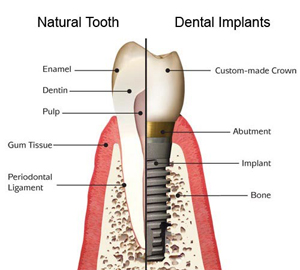
Dental implants are artificial tooth roots made of titanium which replace your missing teeth. The dentist inserts the implants into your jaw bone, where the titanium then fuses with the bone.
Just like your tooth root did before, these implants then build a stable base for a bar, an overdenture or other types of restorations, which will become the visible part of your new teeth.
Dental implants are very small, normally around 10 mm long and only 3-5 mm wide at the top.

Usually each tooth is replaced with one implant per tooth. But if you need to replace many missing teeth or even an entire jaw, there are other solutions. Depending on the condition of your jaw bone and gum, as little as two to four dental implants can already restore your upper or lower jaw with a set of fixed teeth. Often this can be more cost-effective for you.
Click on the image to learn more about which dental implant solutions are available.
Dental implants are widely considered to be the most successful method of tooth replacement used today, because they offer a number of important benefits to patients.
A modern dental implant solution looks and feels just like your natural teeth. Its color, shape and contour is made to match that of your former teeth. The result is a natural smile that will bring back your confidence and quality of life. With your new teeth sparkling on the outsid e, you will soon feel a smile coming back on the inside.
Did you have to give up some of your favorite dishes since you lost your teeth? Or do you feel self-conscious when talking, because your dentures make it more difficult to speak clearly? A dental implant solution can bring back the full function of natural teeth. So no matter how hard, crunchy or sticky the food, dental implants can put it back on your menu. And they can restore your clear speech for long chats with your friends.
Dental implant solutions stimulate your jaw bone, which might have suffered during years of badly fitting dentures. Dental implants trigger a process called osseointegration (from Greek osteon, bone) in your jaw bone, during which the implant integrates with the bone and maintains existing levels of bone.
And there's more good news! Sufficient amounts of jaw bone, and a full set of teeth supporting your lips from the inside, can give you a more youthful appearance.
Forget about uncomfortable, moving dentures. Since dental implants are fixed to your jaw bone, this solution is more stable and more comfortable than dentures. On top of that, dental implants are made of biocompatible materials, which means that your body tolerates them.
Dental implants are very durable. With proper care and good oral hygiene, implants will last for many years or even a lifetime. Decades of research have gone into their functionality and stability, ever since the first patient received modern dental implants in 1965. And they are constantly being developed further.
Implant treatment can be considered a long-term investment into your health and your wellbeing - in short, an investment into your life. Compared to other restorations, costs can seem higher at first glance. However, higher maintenance costs, the potential increase in lost jaw bone and, ultimately, the loss of even more teeth can make other restorations more expensive in the long run.1,2,3,4
Your dentist will first examine your dental situation carefully to decide if you meet the prerequisites for dental implant treatment. It is essential that your gums and jaw bone are free from inflammation. If necessary, these conditions are treated prior to surgery.
During diagnosis, the dentist also evaluates what type of jaw bone you have and how much of it is left. After years of living with missing teeth, your jaw bone can sometimes be severely reduced. In this case, your dentist will discuss alternative procedures with you to make dental implant treatment possible.
Your dentist may opt to use digital tools to plan your treatment by generating an exact 3D image of your mouth. This will help the dental team immensely during surgery, because it helps them find the best angle and depth for your implant.
Implant placement usually is an outpatient procedure and, thanks to local anesthesia, you will hardly feel anything. Depending on the individual situation in your mouth, implants are placed in a one or multiple-step procedure.
After surgery, your dentist usually places a temporary crown, bridge or just a small plastic cap on top of your implant, while the implant integrates with the jaw bone. The integration of implant and bone is called osseointegration (from Greek osteon, bone). Depending on your individual situation, it can take from a few weeks to a few months. In the meantime, your dentist will work with a dental laboratory to design and manufacture your final restoration. Your customize d crown, bridge or bar is then attached to the implant with a tiny screw or cement.
Nobel Biocare implants are designed to maximize the opportunity for Immediate Function. This means that your dentist will often be able to place a temporary restoration already on the day of surgery, so that you can leave with a provisional set of fixed teeth and reduce the number of visits to your dentist.
A number of conditions have to first be fulfilled. Speak to your dentist to find out if it is possible in your case.



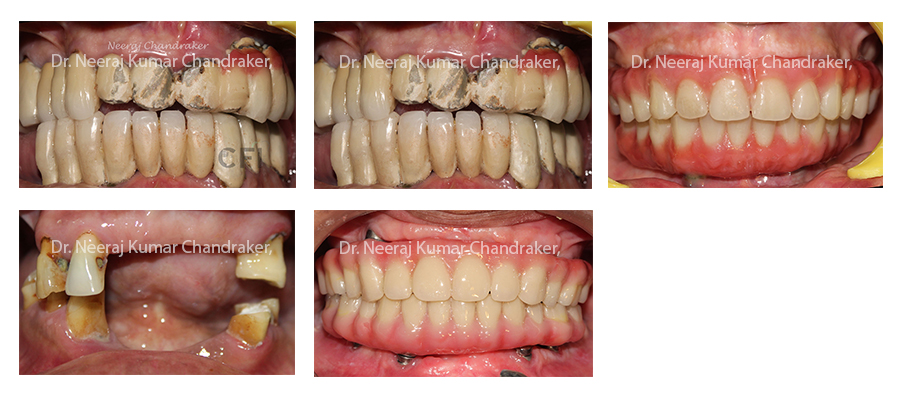

A sinus lift is surgery that adds bone to your upper jaw in the area of your molars and premolars. It's sometimes called a sinus augmentation. The bone is added between your jaw and the maxillary sinuses, which are on either side of your nose.

Patients with insufficient natural, healthy bone to support dental implants could be ideal candidates for bone augmentation, which is the process of rebuilding the bone. The goal is to provide a sound structure where implants can be placed and secured in the alveolar bone structure
